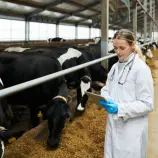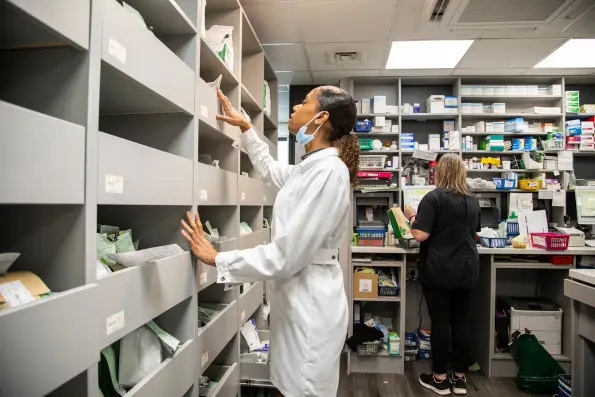Back in early April, more than 140 veterinarians and staff at the FDA's Center for Veterinary Medicine (CVM) were let go as part of massive federal layoffs. The FDA alone is losing about 3,500 employees, with cuts also hitting the CDC and NIH.
Three months later, we're starting to see the effects.
If you're thinking that happened months ago, why should I care now? - here's the thing. These federal vets handle everything from drug approvals to disease surveillance. When they're gone, the ripple effects build over time and hit every clinic in America.
Here's what you need to know about what's changed since April and how to prepare for what's coming.
Your drug supply could get complicated
The CVM reviews and approves every medication you stock. With fewer reviewers since April, we're already seeing the beginnings of longer wait times for new drug approvals - especially generics that help keep costs down for clients.
What you might be noticing already
Response times on drug inquiries have slowed.
Some generic approvals are taking longer than usual.
Communication from CVM is less frequent.
What this means for your practice going forward
New medications could take months or years longer to reach market.
Generic versions of expensive drugs may face additional delays.
Drug shortages could become more frequent.
What to do now
Review your current inventory and identify critical medications
Build relationships with multiple suppliers - don't rely on just one
Consider slightly increasing your stock of essential drugs (without hoarding)
Join or create a local network with other practices to share shortage information
Expect slower response times on regulatory questions
Need clarification on off-label drug use? Wondering about compounding regulations? Have questions about importing a medication? Many of the vets who normally field these questions were shown the door in April.
Practices are already reporting getting answers that used to take days now stretch into weeks. Some are still waiting for responses submitted back in May.

Build your reference library now.
Download current FDA guidance documents for your practice areas.
Save important regulatory clarifications and letters.
Create a shared folder with commonly needed information.
Consider joining professional groups where colleagues share regulatory updates.
The avian flu situation continues to evolve
Since the April layoffs, the avian influenza outbreak has continued spreading through dairy herds and poultry flocks. The new HHS leadership has suggested allowing animals to "develop natural immunity" rather than following previous containment protocols. Meanwhile, many of the federal workers who were managing the outbreak response are no longer in their positions.
So what’s the status of the avian flu situation as of July?
The simple look at your tele-triage subscription model
It's affecting dairy cattle in multiple states.
Egg prices are already climbing due to poultry losses.
The virus has shown ability to infect mammals.
Farm workers are at risk of exposure.
What can you do to prepare your clinic as the outbreak continues to spread?
Review your biosecurity protocols.
Stock appropriate PPE for staff.
Create client education materials about backyard flock safety.
Build relationships with your state veterinarian's office (your local state division of animal health) - they'll be your primary resource.
Have a communication plan ready for concerned pet owners.
Pet food and supplement oversight may weaken
Fewer FDA inspectors means less oversight of pet food manufacturing, supplement claims, and import safety. While reputable companies will maintain standards, bad actors might see an opportunity.
Guide your clients wisely
Stick with established brands with good track records.
Be extra cautious with new supplements making bold claims.
Watch for unusual patterns in pet food-related illnesses.
Document and report any suspected food-related issues to your state authorities.
Red flags to watch for
New brands with no manufacturing history.
Supplements making drug-like claims
Imported products with unclear sourcing.
Sudden formula changes in established products.
Your voice matters more than ever
With fewer federal veterinarians protecting animal and public health, private practice vets become the front line. You're often the first to spot emerging diseases, drug reactions, or food safety issues.
Step up your surveillance game
Report unusual disease patterns to your state veterinarian.
Document adverse drug reactions meticulously.
Share concerning trends with your colleagues.
Consider joining veterinary surveillance networks.
Build stronger local connections.
Regular communication with other area practices.
Relationships with your state veterinary officials.
Connections with local public health departments.
Networks with food animal vets if you're companion-only.
The silver lining - there are opportunities for private practice
As federal resources shrink, demand for veterinary expertise will shift. This creates opportunities for prepared practices

Emerging opportunities
Consulting for farms needing biosecurity guidance.
Educational workshops for backyard flock owners.
Expanded preventive care programs.
Becoming the local trusted source for pet food safety.

Building your reputation
Share factual, helpful information on social media.
Offer community education events.
Write for local publications.
Partner with feed stores and farm supply businesses.
Taking action now
This week
1. Download essential FDA guidance documents.
2. Review your drug inventory and supplier relationships.
3. Check your biosecurity protocols.
4. Connect with your state veterinarian's office.
This month
1. Join or create a local veterinary network.
2. Develop client education materials on food safety.
3. Plan for potential drug shortages.
4. Build relationships with multiple suppliers.
Ongoing
1. Stay informed through AVMA and state associations.
2. Document and report unusual patterns.
3. Support colleagues navigating these changes.
4. Adapt your practice to fill emerging gaps.
